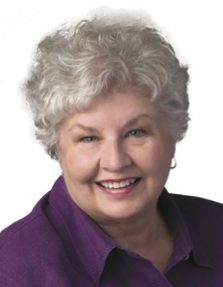
20 Nov 2016 ‘That unquenchable Christmas spirit’
by Vivian Lawson Hogue
My parents always liked to say they didn’t mind having a roster of four boys as they just knew a girl would finally come along. My youngest brother, born in 1939, was last in line for long enough that he thought he was home free for spoiling. Then here came the girl in 1943.
My arrival was during World War II, which closely followed the aftermath of the Great Depression. My mother, with four sons and a gravely ill husband, would now have a daughter. The possibilities of the situation must have been swimming in her head. She was a strong woman, though, even when my nearly 4-year-old brother came for a clinic visit and somehow removed and swallowed a mattress button. She simply held him upside down by the feet, thumped his back and out the button rolled. Meanwhile, my dad was given a new sulfa drug, which began a healing that would bring him home.
By this time, my Depression/War-Era family was accustomed to “thrifty living.” Keeping growing boys in properly fitting clothing was a challenge, but hand-me-downs were expected and Mother had a magical knack for alterations.
The Sears Christmas Catalogue became known as the “wish book,” because wishing was all many people could do. In war times, their wishes were relished as someday-affordable dreams. In the catalog of 1943, there were mostly toys, many of them made of wood because of the need for metal for war materiel. As I recently looked over the pages, I saw women’s handkerchiefs, which are rare now. I even found my face powder brand, which still has the same container design! Some timely items were a 6-foot artificial Christmas tree for $4.53; a set of 24 balsa wood model airplanes for the purpose of identifying aircraft shapes from the ground; books about raising “victory gardens” and raising chickens; and Holy Bibles priced from $1.69 and $4.69. Women’s hosiery was mainly of rayon and cotton, as silk was being used for manufacturing parachutes. An advertisement invited trappers to sell their furs to Sears.
Nearly 100 songs were recorded that year by such bands and singers as Glenn Miller, the Dorsey brothers, the Ink Spots, Benny Goodman, Bing Crosby, Frank Sinatra, Harry James and Duke Ellington. A favorite appropriate number was “Comin’ in on a Wing and a Prayer.”
Ration cards were distributed to citizens mainly for tires, gasoline and sugar to help with furnishing such to help the troops. Groceries listed vegetables such as a 10 lb. bag of potatoes for 45 cents plus 5 ration stamps. Some people without vehicles donated gasoline and tire stamps to local doctors. Women created recipes using little or no sugar in order to limit sugar stamp usage.
To show that sometimes things do not change or should not change, the following paraphrases are highlights from President Franklin D. Roosevelt’s "Fireside Chat" on Christmas Eve 1943:
“On this Christmas Eve, there are over 10 million men in the armed forces of the United States alone. There is a special spirit that has warmed our hearts since our earliest childhood – a spirit that brings us close to our homes, families, friends and neighbors – the Christmas spirit of ‘peace on earth, good will toward men.’ It is an unquenchable spirit.
“We have said, ‘Merry Christmas’ and ‘Happy New Year,’ but we have known in our hearts that the clouds which have hung over our world have prevented us from saying it with full sincerity and conviction. The doctrine that the strong shall dominate the weak is the doctrine of our enemies, and we reject it. The right of each nation to freedom must be measured by the willingness of that nation to fight for freedom.
“We here in the United States had better be sure that our soldiers and sailors come home to find an America in which they are given full opportunities for education, rehabilitation, social security, employment and business enterprise under the free American system. God bless all of you who fight our battles on this Christmas Eve. God bless us all and keep us strong in our faith for a better day for human kind.”
A native of Conway, Vivian Lawson Hogue graduated from the University of Central Arkansas with a degree in art education. A retired teacher, she worked in the Conway School District for 23 years. She is editor of the Faulkner County Historical Society’s semi-annual publication, “Faulkner Facts and Fiddlings.” She can be reached at [email protected].









